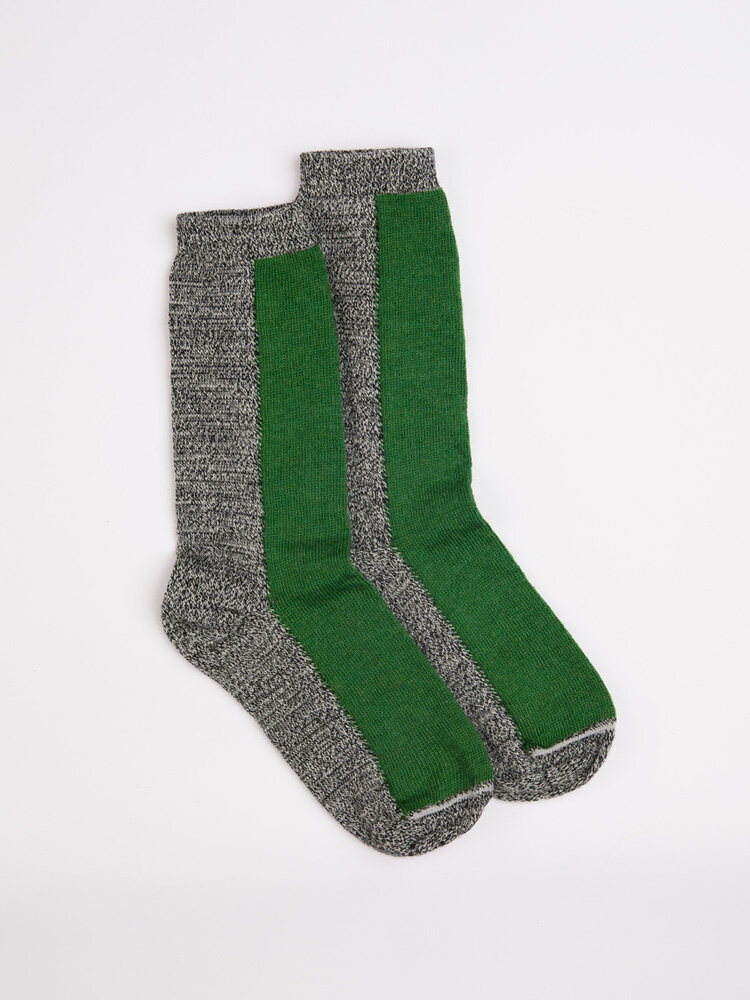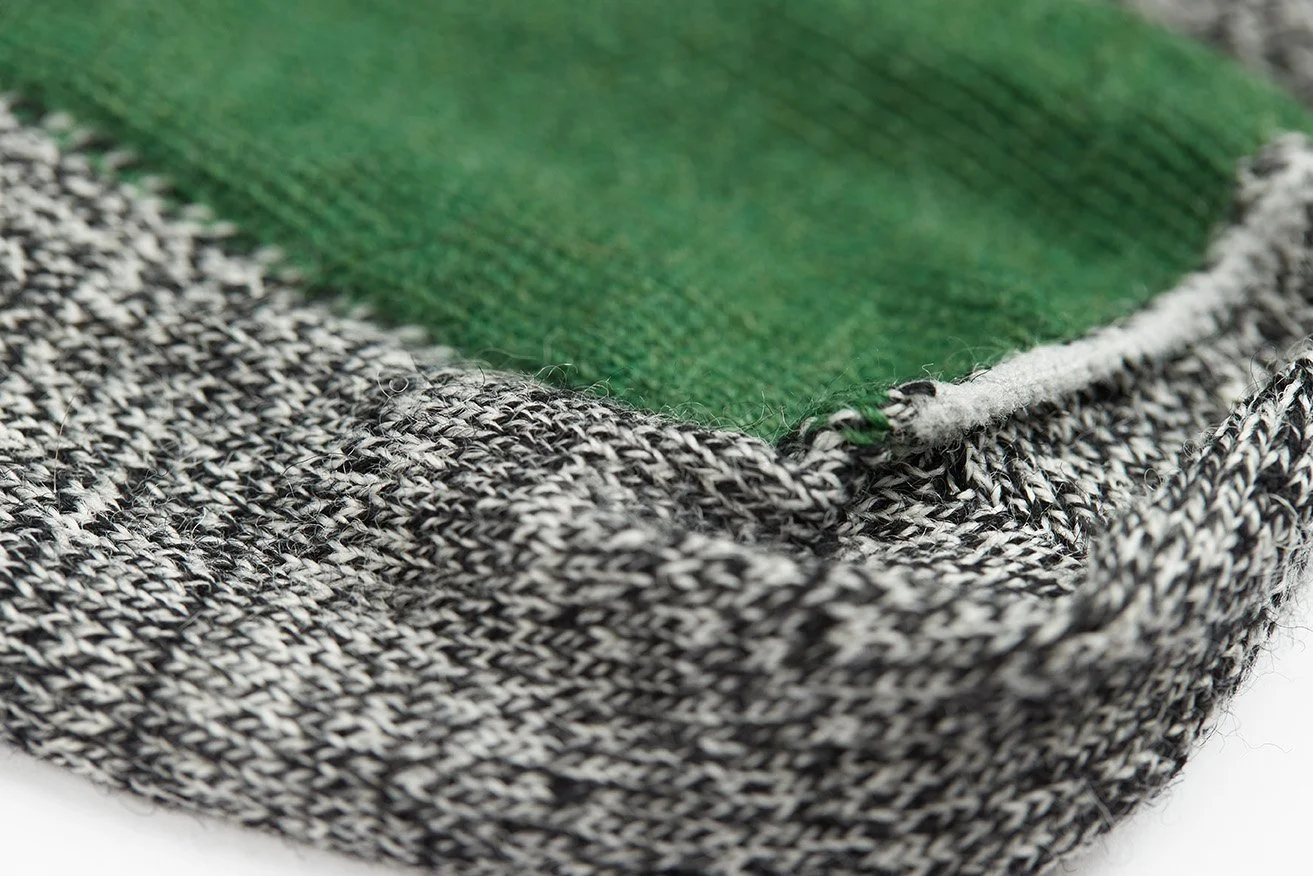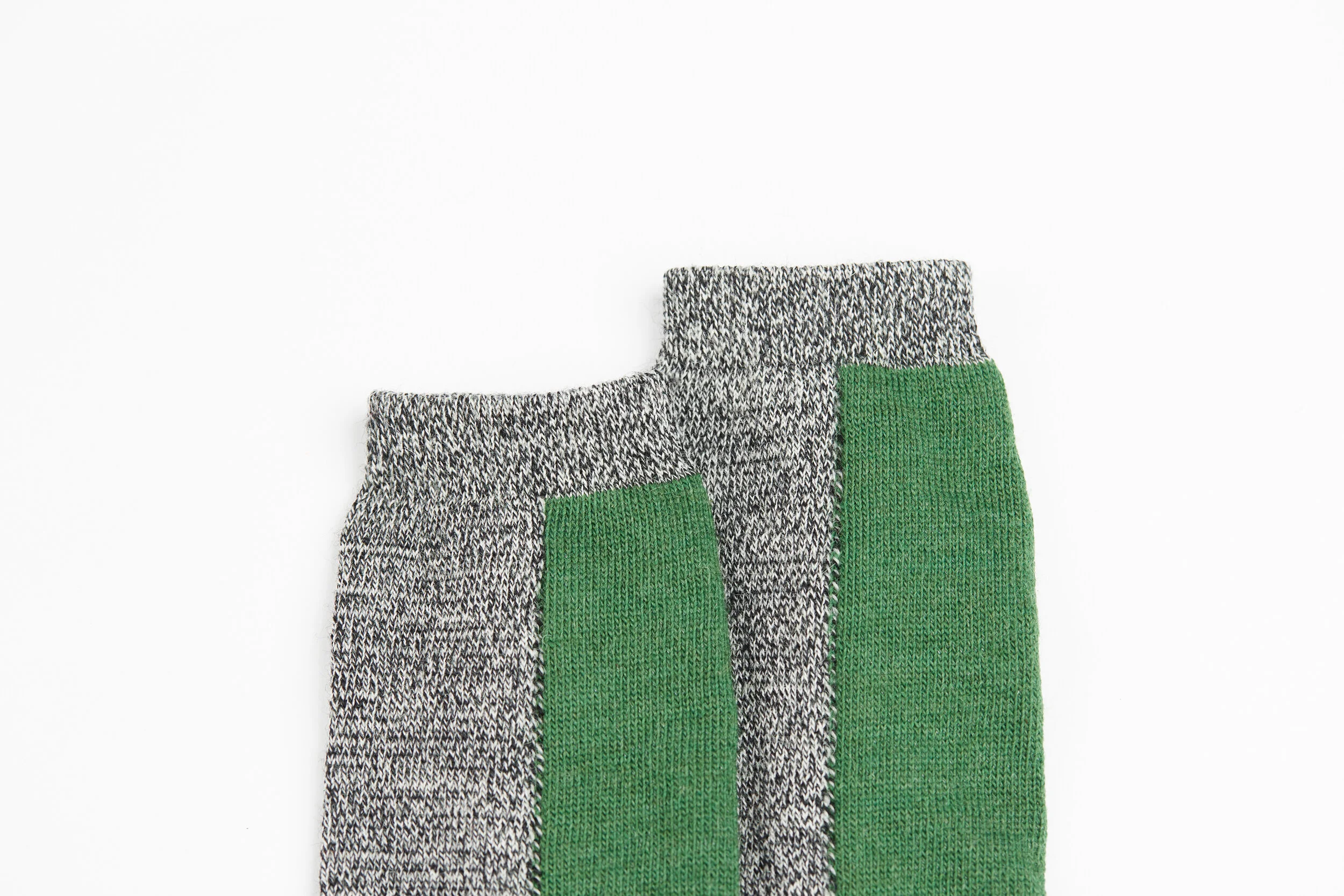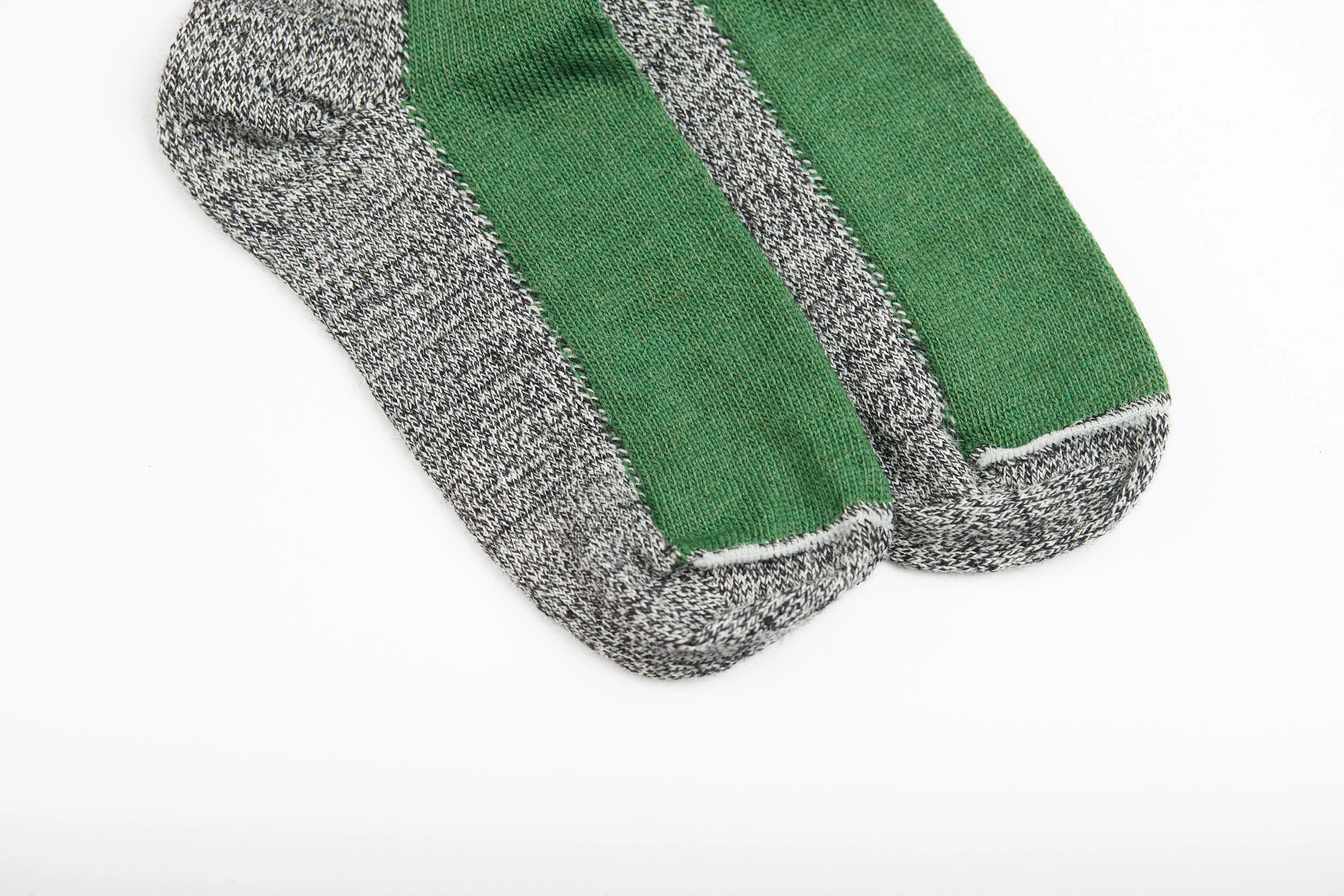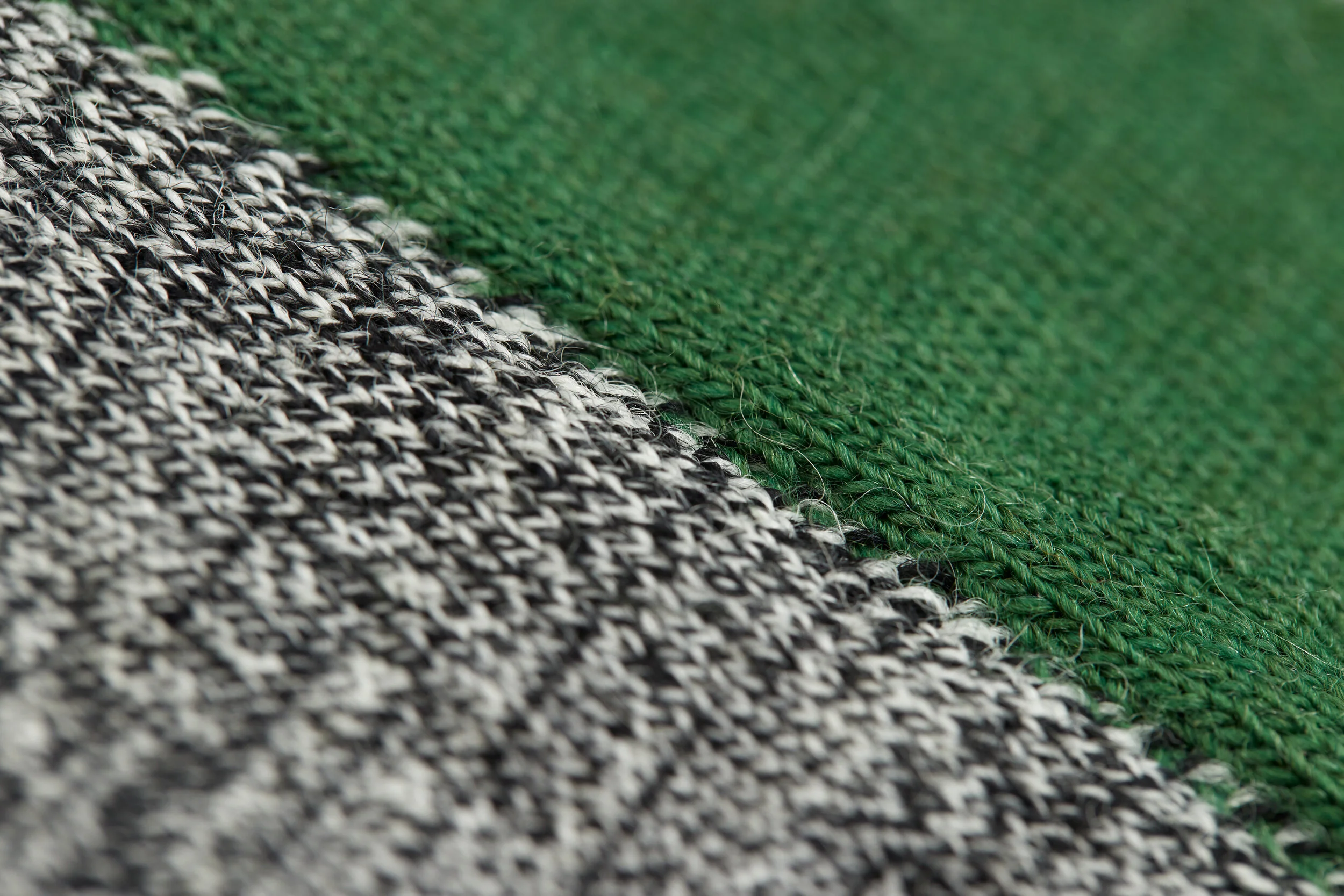A sock with a purpose
Why our socks contain plastic fibres
Standard manufacturing systems rely on the use of ‘additional’ plastic fibres in sock construction for strength, stretch and durability. It’s a habit that has become interwoven with the production of socks and many other garments. Regulations in UK law currently allow this ‘additional’ plastic to be hidden from consumers.
How our socks can force change
Our aim is to be the first sock producer to fully declare all plastic content, as a protest and a campaign for change. Buying the sock shows consumers want producers to be truthful about the environmental impact of their clothing. A growing community that demands total honesty on labels will set new standards helping to accelerate transition to sustainable alternatives.
Do Not Bin. Plastic content will contribute to landfill pollution. Donate.
Socks are the most requested item by homeless charities. Give your socks a longer life by donating them, washed and in good condition.
Donate to Shelter or Salvation Army
Even damaged textiles can generate much needed income. Donations can now also be posted free to many charities - Find out more.
We keep packaging and printing to a minimum
to conserve resources
packaging manufactured to fsc standards
uncoated print finishesprinting in UK by a B Corp company
carbon balanced sock packaging
all packing is either recyclable,
compostable and/or biodegradable
PLEASE RECYCLE ALL PACKAGING
Nylon:
synthetic polymer fibre made from petroleum
also labeled as polyamide
not biodegradable
Nylon covered rubber:
a synthetic, polymer made from petroleum
alternative equivalents also labeled as elastane, spandex or lycra
not biodegradable
Wool:
requires less washing, reduces energy use
anti-bacterial properties, for healthier feet
fibre structure regulates temperature
moisture wicking, unlike cotton and bamboo
renewable resource

